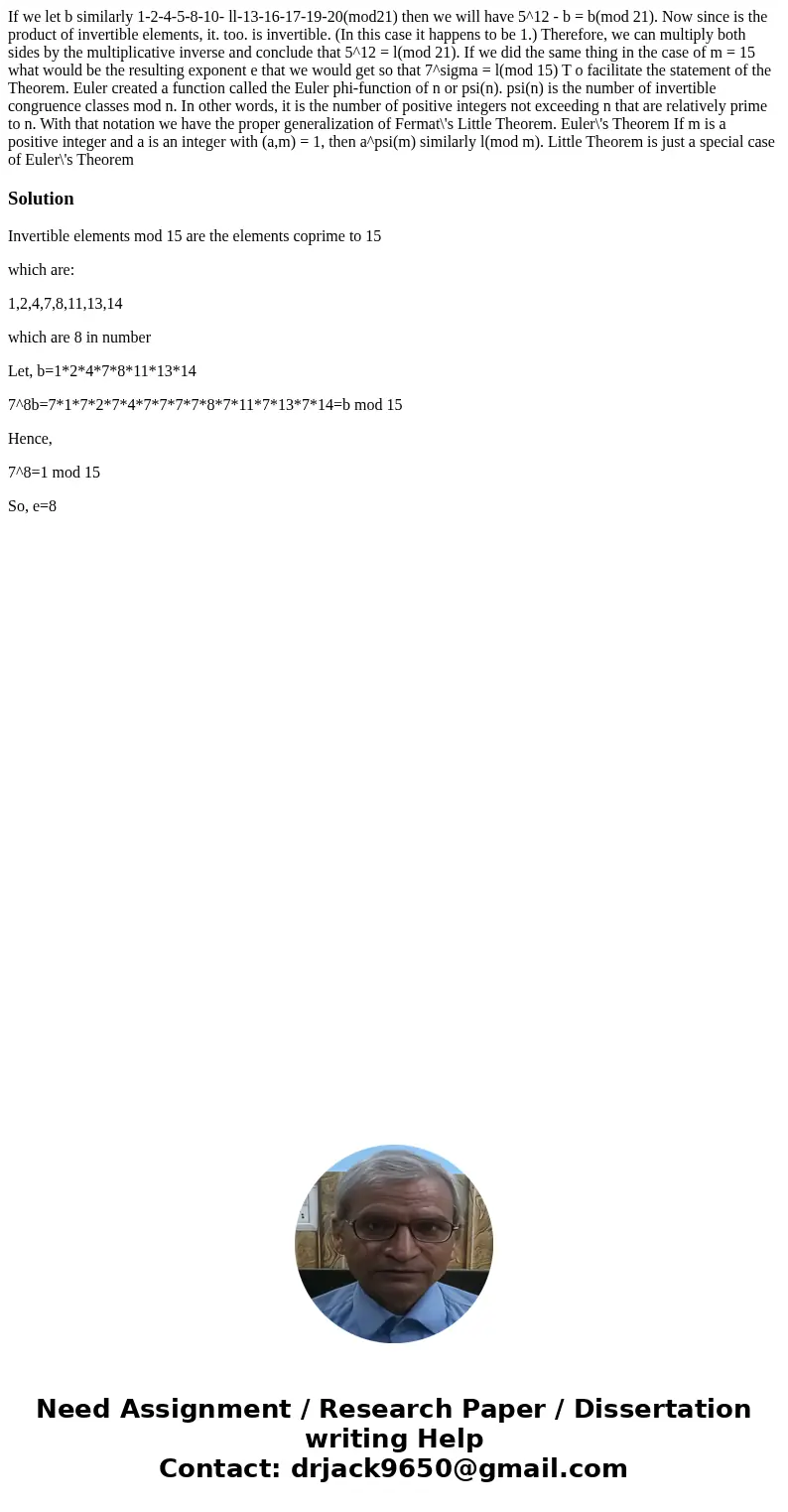If we let b similarly 1245810 ll1316171920mod21 then we will
If we let b similarly 1-2-4-5-8-10- ll-13-16-17-19-20(mod21) then we will have 5^12 - b = b(mod 21). Now since is the product of invertible elements, it. too. is invertible. (In this case it happens to be 1.) Therefore, we can multiply both sides by the multiplicative inverse and conclude that 5^12 = l(mod 21). If we did the same thing in the case of m = 15 what would be the resulting exponent e that we would get so that 7^sigma = l(mod 15) T o facilitate the statement of the Theorem. Euler created a function called the Euler phi-function of n or psi(n). psi(n) is the number of invertible congruence classes mod n. In other words, it is the number of positive integers not exceeding n that are relatively prime to n. With that notation we have the proper generalization of Fermat\'s Little Theorem. Euler\'s Theorem If m is a positive integer and a is an integer with (a,m) = 1, then a^psi(m) similarly l(mod m). Little Theorem is just a special case of Euler\'s Theorem
Solution
Invertible elements mod 15 are the elements coprime to 15
which are:
1,2,4,7,8,11,13,14
which are 8 in number
Let, b=1*2*4*7*8*11*13*14
7^8b=7*1*7*2*7*4*7*7*7*7*8*7*11*7*13*7*14=b mod 15
Hence,
7^8=1 mod 15
So, e=8

 Homework Sourse
Homework Sourse